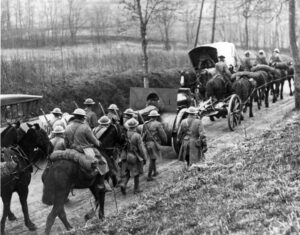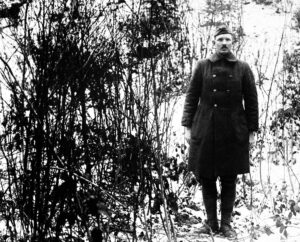Hugh Lenox Scott was born in Danville, Kentucky, on 22 September 1853. He graduated from the United States Military Academy in 1876 and was commissioned a second lieutenant with the 9th Cavalry. Soon he joined the 7th Cavalry in a position which opened as a result of the rout of the 7th Cavalry at Little Big Horn. He fought in the Nez Perce campaign of 1877 and a year later was made a first lieutenant. In 1880, he married Mary Merrill. Scott studied and became an expert on the languages and customs of the Plains Indians. In 1890, he served in the Sioux outbreak, and fought at Porcupine, Wounded Knee, and White Clay Creeks. From 1892 to 1897, he recruited and commanded Troop L of the 7th Cavalry, which was composed of Kiowa, Comanche and Apache Indians, at Fort Sill. In 1895, he was promoted to captain. From 1894 to 1897, he was in charge of Geronimo’s band of Chiricahua prisoners of war. Soon, he was sent to the Adjutant General’s Office to work on Indian sign language. Promoted to major, he served as assistant adjutant general of I Corps from 1898 to 1899. He was soon promoted to lieutenant colonel of volunteers and served with the military governor of Cuba until 1900.
Scott was transferred to the Philippines and served as the governor of the Sulu Archipelago from 1903 to 1906. From 1906 to 1910, he was the superintendent of the United States Military Academy. In 1911, he was promoted to lieutenant colonel and then colonel. By 1913, he was a brigadier general. In 1914, he served as assistant chief of staff of the U.S. Army. He was made a major general, and served as Chief of Staff of the Army from 16 November 1914 to 21 September 1917. During this time, he supervised the buildup of troops under General John J. Pershing for the Punitive Expedition into Mexico. He also laid the foundation for the troop buildup for World War I. To this end, he supported conscription for the Army. Later, he served as a member of the Root Commission to Russia before retiring in September, 1917. He was recalled to active duty to tour the battlefields of Europe and to command the 78th Division at Fort Dix in 1918. He retired again in 1919. For the next two years, he was a member of the Board of Indian Commissioners. He died in Washington, D.C., on 30 April 1934.





